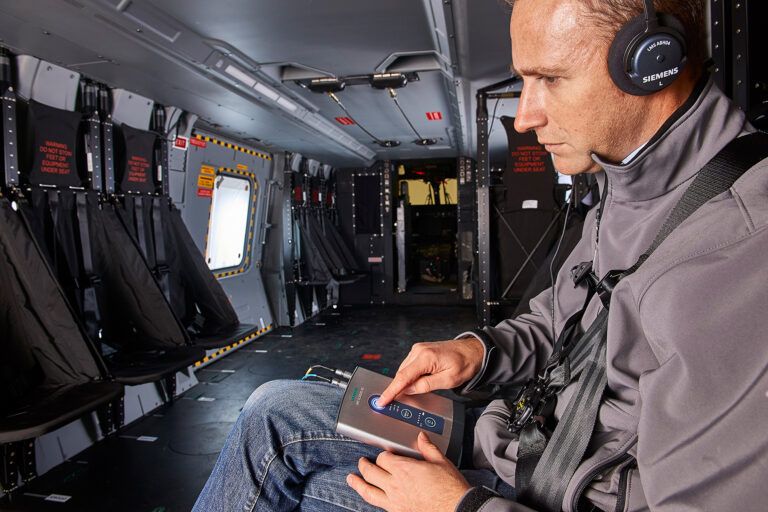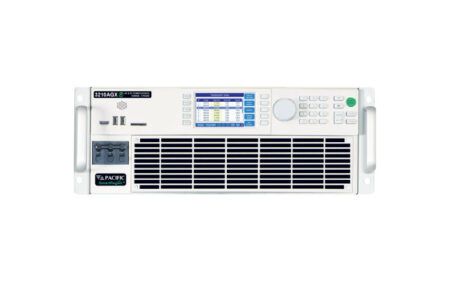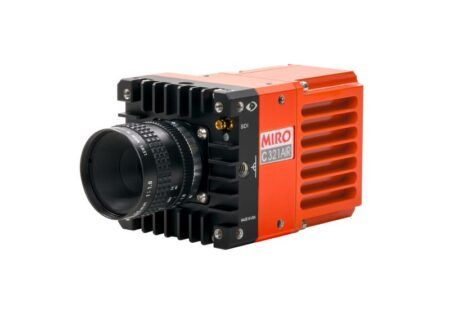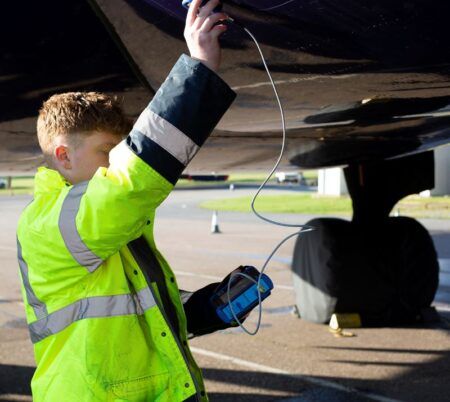Flight comfort expectations pose new challenges for acoustic development teams.
With the increased competition in air travel and the development of many new Vertical take-off and landing (VTOL) vehicle programs in support of future urban air mobility, providing a quiet cabin is key in the market. However, acoustic requirements are frequently in conflict with the need for lighter and more eco-friendly aircraft. Finding the balance between those conflicting requirements is a day-to-day challenge for acoustic engineers. In-flight measurements can be useful to troubleshoot noise issues and design efficient noise control measures for improved cabin comfort.
Simcenter SCADAS data acquisition systems are used to efficiently acquire operational noise or vibration data. The range includes handheld systems for headset measurements and general-purpose in-flight measurements, as well as highly scalable systems for operational measurements involving the widest range of sensors. Noise and vibration performance are analyzed online or after the flight using the rich processing capabilities of Testlab software.
Keeping overall aircraft noise level under control is important but designing an improved aircraft acoustic signature might require going one step further. And shaping a sound so the human ear likes it is the domain of sound quality engineering. The process involves the recording of different sounds, which is done using a binaural recording device, such as Simcenter SCADAS XS hardware and the binaural headset. Data is then processed using Simcenter Testlab for detailed sound quality engineering. Objective evaluation is possible thanks to a wide range of sound quality metrics based on speech intelligibility, annoyance, tonal content or modulation effects.
Aircraft noise results from the contribution of multiple complex sources with various temporal and frequency characteristics. Getting a good understanding of the relative contribution of each source is crucial to develop noise control measures that significantly improve aircraft acoustic performance. Engineering teams need measurement techniques that are easy to set up and deliver results as quickly as possible, as flight testing is expensive. Interior sound source localization for cockpit or cabin noise is efficiently performed using the Simcenter 3D acoustic camera. This rigid spherical acoustic array drastically speeds up aircraft acoustic testing compared to traditional scanning methods. The technique allows the user to capture sources from all directions and provides a detailed 360-degree view of the sources in the aircraft interior. Just a few seconds of measurement are enough to provide the acoustic map of the cabin, yielding on-the-spot accurate and comparable results.
Aircraft interior noise arises from exterior sources transmitted through a variety of paths into the cabin and from interior noise sources. Understanding how the energy is transferred from the sources to the receiver in the cabin is essential to derive efficient noise control measures. Simcenter hardware and software solutions help gain engineering insights into these phenomena by implementing a comprehensive source-transfer-receiver approach. The procedure to build such a transfer path analysis (TPA) model consists of two steps – first, identify operational loads from in-operation tests in-flight or on the ground; and second, estimate the frequency response functions (FRF) between the load interfaces and target locations. The data is then processed to obtain contribution plots, highlighting possible issues at the source side, along the transmission path, like a structural resonance, or due to dynamic interaction between the source and the structure.
The Simcenter hardware and software solutions are designed to efficiently support the widest range of acoustic measurements in support of quieter aircraft design and improved sound quality. The solution has proven to be extremely efficient in providing essential insight into the development of quieter and more efficient aircraft.
This article was supplied by Siemens





